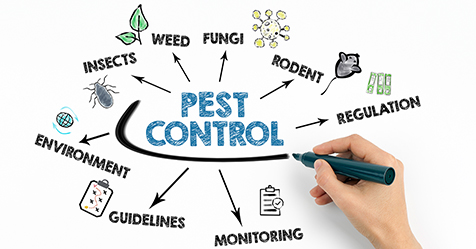It”s no surprise that unpleasant smells deter facility visitors.
In fact, a recent Harris Interactive survey found 90 percent of U.S. adults would never rebook at a hotel and 85 percent would never return to a restaurant with unpleasant odor.
Similarly, according to the International Facility Management Association (IFMA), poor indoor air quality (IAQ) and irregular building temperatures rank in the top 10 office building complaints.
With such convincing evidence revealing the substantial impact of poor IAQ on business, facility managers need to continue to look for ways to improve IAQ.
One way to attack the challenges associated with poor IAQ is to implement regular air conditioning (AC) unit deep cleanings.
Deep cleaning AC units is beneficial for most heating, ventilation and air conditioning (HVAC) systems, including packaged terminal air conditioners (PTACs), vertical terminal air conditioners (VTACs) and vertical and horizontal fan coils.
Facility-wide Benefits
The benefits of deep cleaning AC units are widespread.
Traditionally, most facility managers clean parts of a unit, such as the base pan or coil, while the entire unit is rarely cleaned.
Deep cleaning an AC unit will:
• Improve IAQ conditions
Cleaning the filter of an AC unit is an essential component of deep cleaning.
A clean air filter captures and removes particles to minimize allergens from the air.
Further, increased airflow and enhanced temperature control improves comfort for building occupants.
• Minimize odors
Improperly cleaned AC units are a source of malodor.
According to the Hospitality World Network, the most common source of unpleasant odors in PTAC systems is the accumulation of condensation in the base pan.
The lingering and stagnant water provides optimal conditions for odor-causing bacteria to thrive and breed.
By deep cleaning and sanitizing the unit, facility managers can kill up to 99.99 percent of odor causing bacteria, mold and mildew.
• Reduce energy consumption
According to the National Technical Information Service (NTIS), HVAC accounts for 30 percent of a commercial building”s energy consumption, which represents the highest consumption for a single entity.
With high energy consumption and excessive costs directly related to HVAC systems, services that increase the efficiency of AC units help decrease utility costs — also boding well with owners and upper management.
Properly cleaned units transfer air more efficiently and at a higher rate of speed to reduce the amount of energy consumed.
A recent independent study revealed that deep cleaning AC units can increase airflow up to 28 percent to greatly reduce energy consumption throughout the building.
• Extend life expectancy of units
By deep cleaning AC units, facility managers restore the units to original quality and maximize the life of the assets, which are very expensive to replace.
In fact, according to the Hospitality World Network, a well-maintained AC system can last up to 10 years, but that number decreases significantly when units are not properly cared for.
Advanced Six-step Process For Optimal Results
To thoroughly deep clean an AC unit, consider using a process certified by the Green Clean Institute as a “Green Process” to limit the environmental impact of the process and reduce the impact of the cleaning process on IAQ.
Before beginning the deep cleaning process, make sure the room or facility is adequately prepared.
Move furniture or use tarps to cover large pieces and be sure to power down the AC unit.
Facility managers can ensure units are thoroughly deep cleaned in a manner that will achieve the desired results by following these six steps:
- Complete coil cleaning
- Clean AC pan
- Drain line treatment
- Disinfect the entire unit
- Pan purge strip insertion
- Filter cleaning.
A complete AC unit deep cleaning combines state-of-the-art chemicals and quality service professionals to provide the best results.
For many facility managers, enlisting the help of a service provider is the best solution.
This ensures each step is thoroughly completed by a trained technician using the proper chemicals and dilutions.
In addition, it limits downtime and ensures every piece of the unit is properly reassembled to avoid unit errors.
In today”s uncertain economy, it”s important to focus on the bottom line.
From improved IAQ to increased efficiency, facilities that implement regular AC unit deep cleanings create a win-win for building guests and management.


